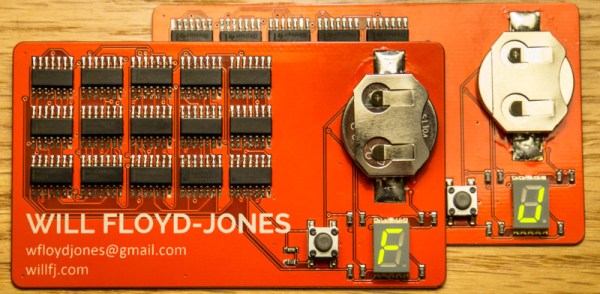Having seen a number of PCB business cards [Will] decided to go against the more popular choice of a micro-controller based design and show some character with a logic based finite state machine. [Will] uses a single 7-segment display to scroll through the letters of his name with a state machine that outputs the desired combination of 1’s and 0’s to the LED display each time the tactile button is pushed.
[Will] uses a 4-bit counter made up of D Flip-Flops for the clock signal as a conditional input to 6 of the 4-input AND gates. He doesn’t go into the painful details of displaying each character through the process (thankfully) but he does mention that he uses the Quine-McCluskey technique for reduction instead of Boolean algebra. Since his name is 11 characters long and the 4-bit binary counter goes from 0000 to 1111 leaving 5 more pushes of the button before rolling the count back to 0000, during which time the display is left blank. [Will] kindly includes the eagle and Gerber files for your downloading pleasure over at his blog if you’re interested in getting a little deeper into the design.
Continue reading “This PCB Business Card Is Logically Different”












